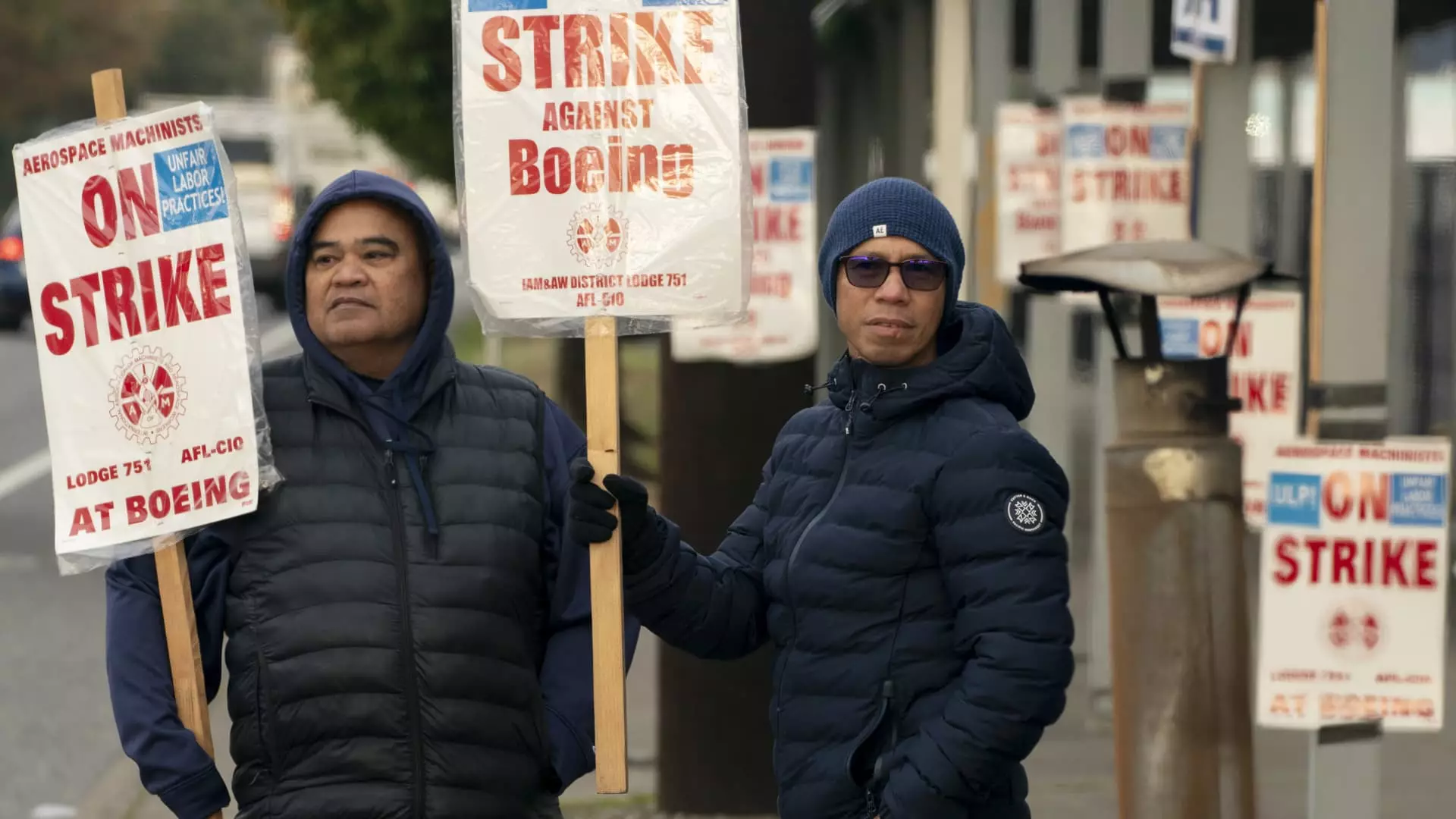In the world of manufacturing, few events are as disruptive as a labor strike, particularly when it involves a giant like Boeing. The current machinist strike, entering its seventh week, has created a significant ripple effect, not only within the company but also across the broader labor market. As Boeing grapples with its internal challenges and the ramifications of a potentially iceberg-caliber setback, the upcoming U.S. jobs report looms large. This report will not only serve as a gauge of the nation’s economic health but also be unveiled just prior to crucial political and fiscal developments.
Approximately 44,000 U.S. workers were on strike during the Labor Department’s mid-October survey, with about 33,000 of them comprising Boeing machinists. These workers commenced their strike on September 13 after rejecting a union-endorsed labor contract, marking the first industrial action of its kind since 2008. The union’s decision to strike underscores deep-seated discontent among machinists regarding workplace conditions and proposed terms, including a notable 35% wage increase that was still not deemed satisfactory.
Economists are forecasting that despite the clouds looming over Boeing, the U.S. economy will add roughly 100,000 jobs in October. However, the strike’s trajectory, compounded by external factors such as Hurricane Helene and Hurricane Milton, could yield a more modest outcome. Bank of America analysts anticipate a downward adjustment of at least 50,000 jobs as a direct consequence of these events. Federal Reserve representatives have indicated that these disruptions might reflect a temporary yet significant contraction in the job market.
Under new CEO Kelly Ortberg’s leadership, Boeing faces an uphill battle not just in negotiating with machinists, but also in addressing broader quality and safety concerns. Since assuming the role in early August, Ortberg has signaled intentions to streamline operations by cutting 10% of the company’s global workforce, which equates to around 17,000 jobs. This decision points to both an aspiration for greater operational efficiency and a necessary response to financial pressures that have long overshadowed the aerospace giant.
Efforts to negotiate a resolution have included direct involvement from the Biden administration, illustrating the strike’s significance to national interests. Despite these high-level discussions, the latest union vote showed a solid 64% refusal of Boeing’s proposal, revealing substantial unrest among the workforce regarding recent contractual offerings.
Wider Implications for the Aerospace Industry
The ramifications of Boeing’s strike extend far beyond its own workforce. The aerospace supply chain, which is already fragile, could be put under further strain as the situation evolves. The effects are already evident; Spirit AeroSystems, a key supplier to Boeing, has begun issuing furloughs to around 700 employees due to the production slowdown caused by the ongoing strike. Reports suggest that if Boeing’s strike extends beyond late November, Spirit may face even harsher actions, including hundreds of layoffs.
These developments highlight a cascading effect: as Boeing seeks to navigate its labor disputes and potential layoffs, it inadvertently influences employment stability in associated sectors that rely heavily on their production schedules. This interconnectedness complicates the ability of federal employment surveys to capture the true employment landscape, making it increasingly difficult to anticipate changes.
As the ongoing strike coalesces with critical employment statistics and government meetings, it becomes clear that the ramifications of this labor dispute extend well beyond the confines of Boeing’s operations. With a keen eye on resolving internal disparities, Boeing must also consider the broader economic implications and the precarious nature of its alliances within the supply chain. The resolution of this strike could very well define not only the company’s immediate future but also the economic landscape leading into pivotal political maneuvers in the coming weeks.
In sum, as Boeing navigates this turbulent period, every decision made will resonate throughout the wider economy, emphasizing the intricate web of relationships within America’s manufacturing sector. The question remains: will effective negotiations pave the way for a more stable future, or can we expect further turbulence amidst an already tumultuous environment? The answer awaits, just around the corner.

